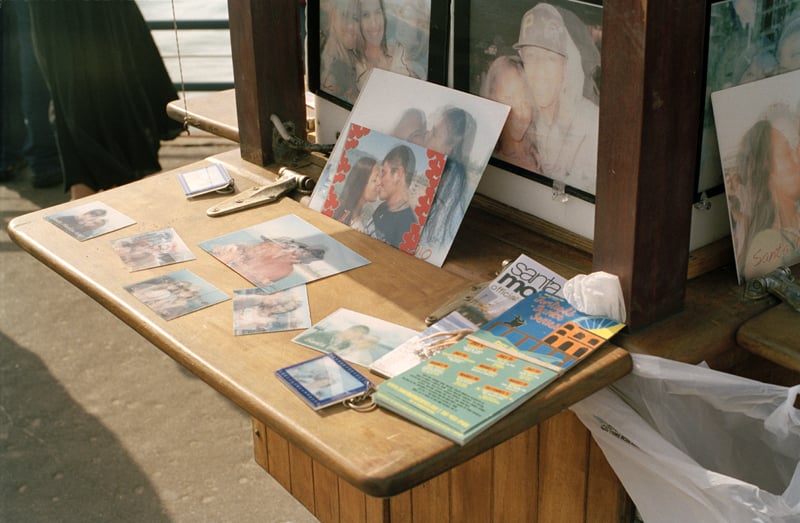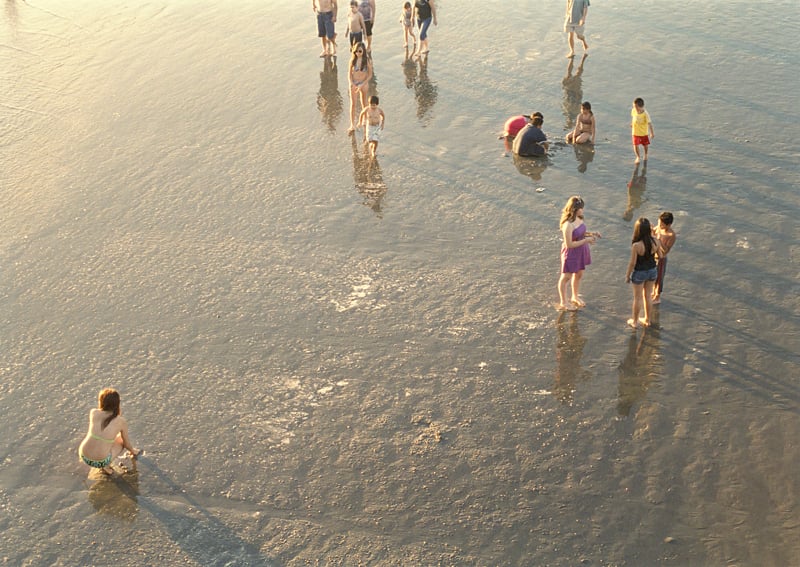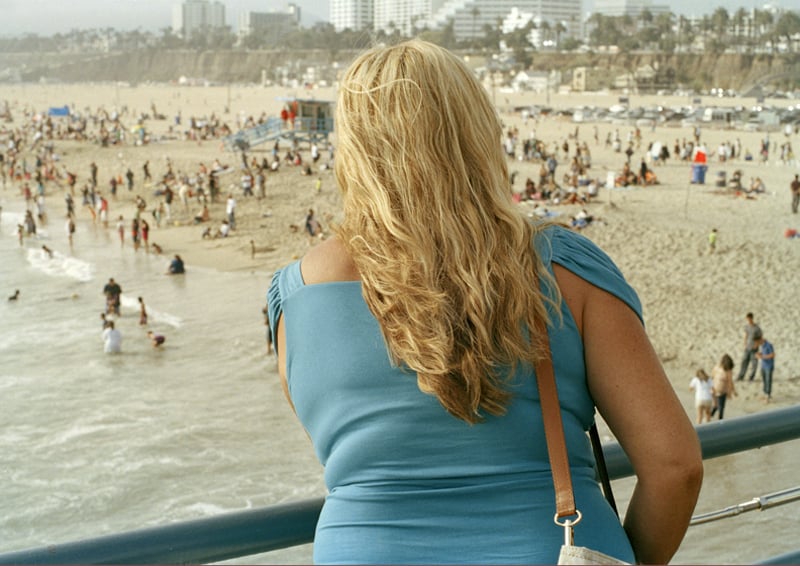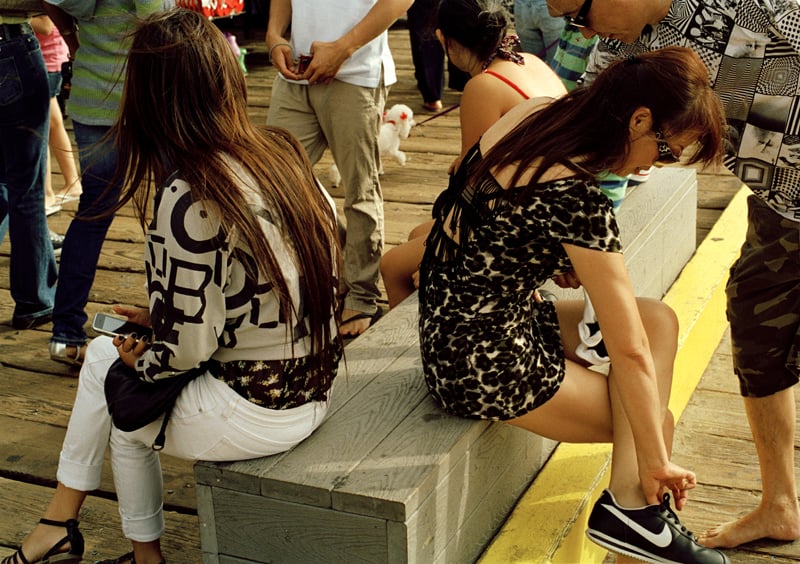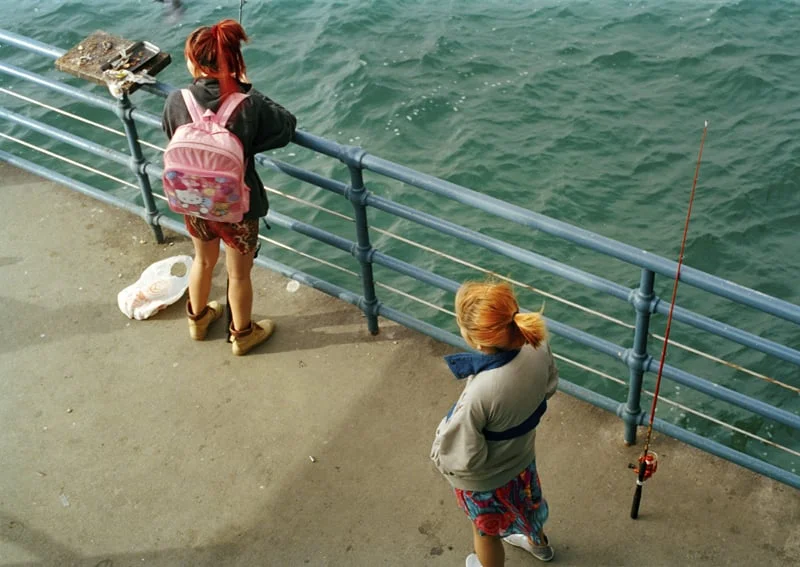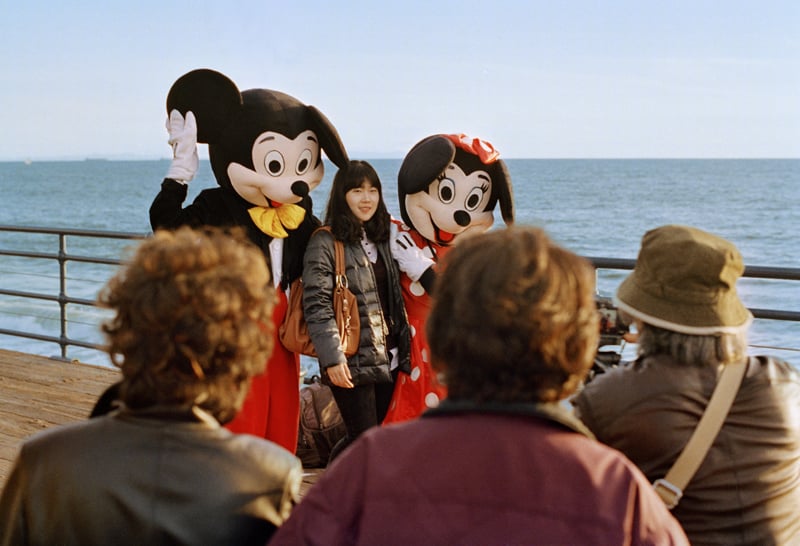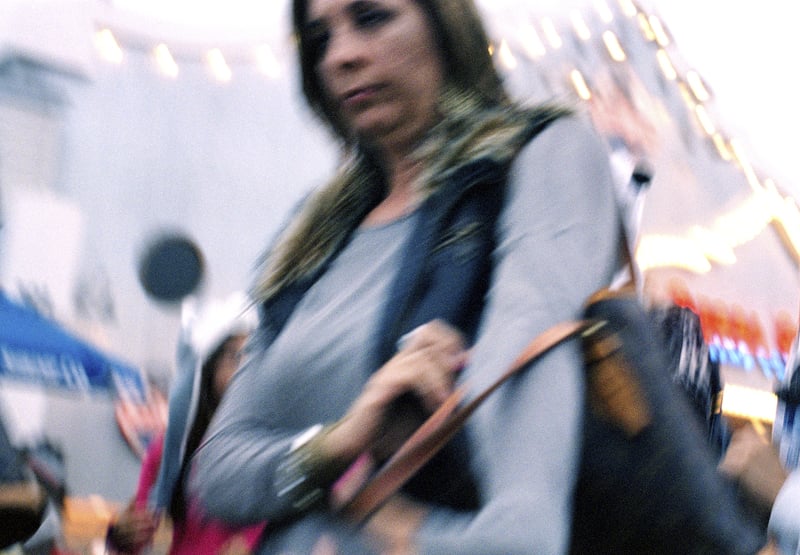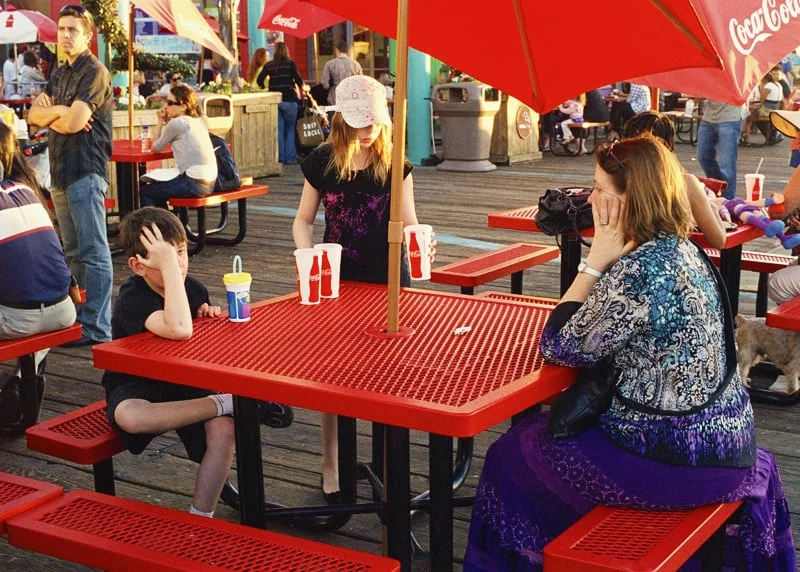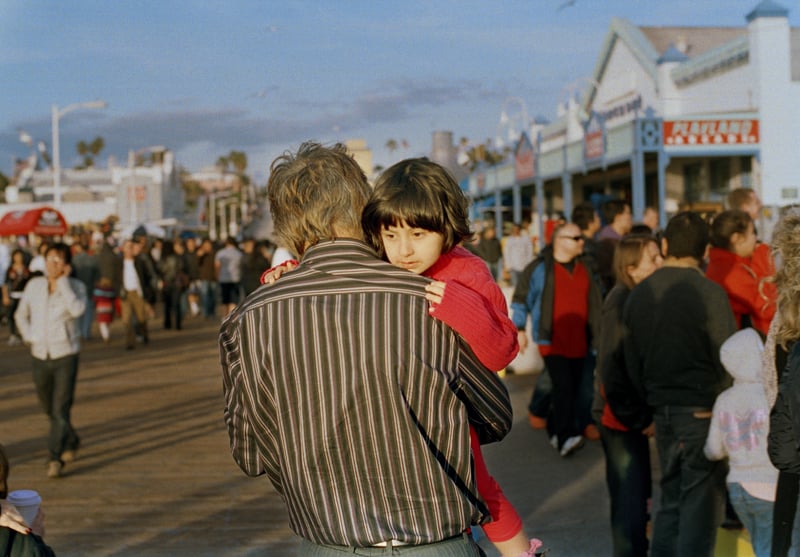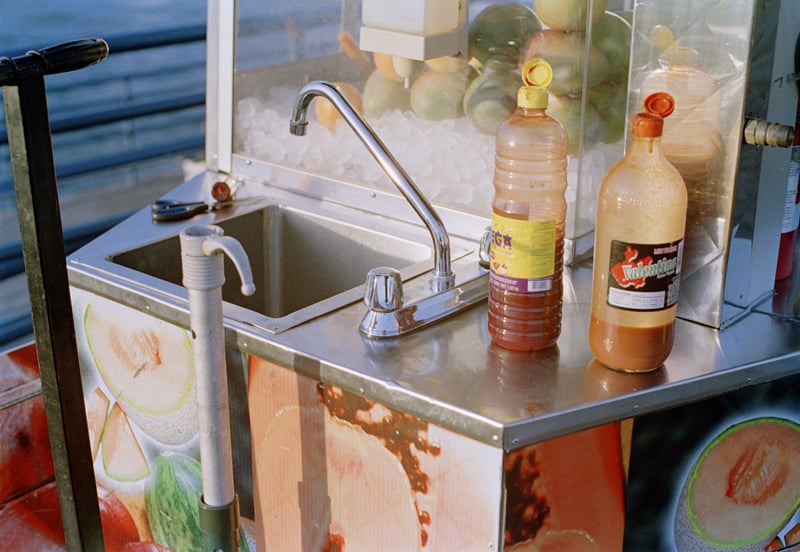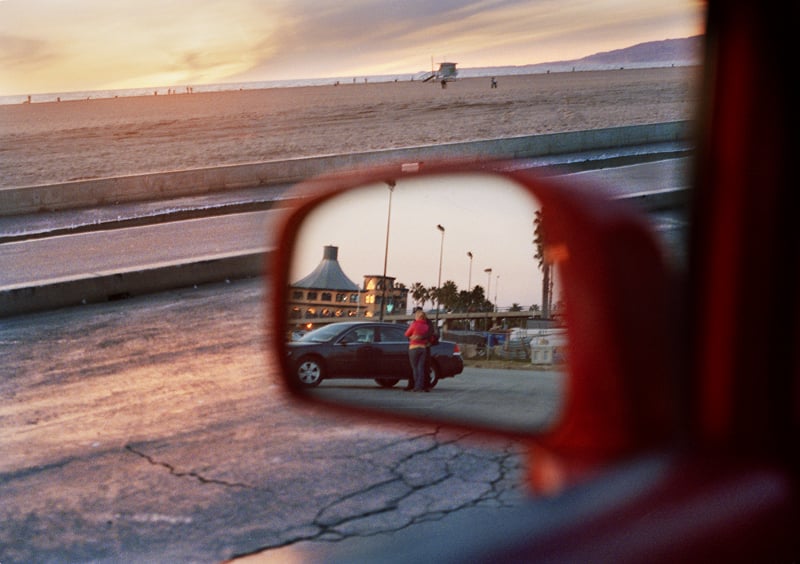The construct of the modern day Los Angelino exists as a boisterous dichotomy—stir in one part dream and one part shattered, and you have a peevish life applicant. However, if the city’s backdrop were suddenly swept away, the glitz and the riches hidden, these approximately ten million dreamers would still be looking for another, and a place to spend weekends together—raveling and unraveling their relationships.
The End of L.A. endeavors to portray the domestic calamity of just one of these places: the Santa Monica Pier. Those photographed become subject to their own uninterrupted behaviors, some demonstrative and others cryptic. No single anecdote can tell the odd tale of the typical pier goer’s day, how they arrived, who they’re with and who they wish to leave with or without. Most of their stories are still sketched in sand. It’s not just a coincidence the Pier rarely sees rain.
Over the 8 years I lived in Santa Monica, California, it wasn’t until my final year in the city that I first walked the infamous pier, a staple of southern California beach culture. The amalgam of people with intriguing faces, unusual behaviors and seemingly ulterior motives (other than enjoying a day at the beach) caught my interest. I began photographing each weekend evening, and what unfolded before me with a few simple strolls up and down the boardwalk became more than just documentation. I discovered a lyrical vibrancy that was malleable, and directly dependent of my photographic verdicts. Through striving to capture one emotion taken from a much broader story, I have became interested in uncovering relationships; whether they are concerned with color, patterns, human interaction or space and temporal collisions. I never actively searched for a conclusion to my study, but instead, an entry to understanding the Pier’s idiosyncrasies.
